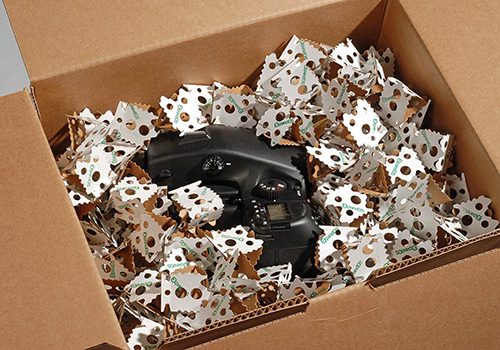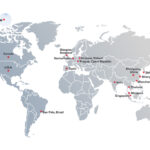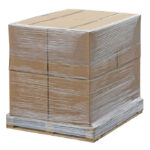Damaged Packages Damage the Bottom Line
One look at a shipping center where boxes are tossed onto trucks, or a glimpse of delivery drivers who sprint from house to house, gives you some insight into what happens to items once they are boxed and leave your business. As e-commerce continues to grow at a rapid pace, the need to find means to protect all those shipped packages becomes even greater. Fortunately, Supply Source can help you find the best packaging solutions to assure your shipments arrive intact.
On a percentage basis, the number of damaged and returned packages might seem low, but the overall costs can be significant. Processing a damaged item means time spent inspecting the shipment, documenting the damage, and evaluating any freight damage claims. Add in the return shipping costs and the costs to store and properly dispose of the damaged goods. Finally, calculate the business that may be lost when a customer is unsatisfied, issues bad reviews, and ultimately goes to a competitor. Now that one shipment that arrived broken takes on a much larger role in overall profitability.
 The cost of damaged goods expands even more when the products being shipped are parts to produce another product. If one company is making widgets that are sent to a manufacturer that produces a finished product, a shipment of damaged widgets can easily delay work on an assembly line and disrupt final deliveries. Imagine if that manufacturer made cars and because that shipment of spark plugs was damaged, a fleet of vehicles was put on hold. Now that damage cost doesn’t seem insignificant.
The cost of damaged goods expands even more when the products being shipped are parts to produce another product. If one company is making widgets that are sent to a manufacturer that produces a finished product, a shipment of damaged widgets can easily delay work on an assembly line and disrupt final deliveries. Imagine if that manufacturer made cars and because that shipment of spark plugs was damaged, a fleet of vehicles was put on hold. Now that damage cost doesn’t seem insignificant.
Package Protection Products
There are outside-the-box forces that cannot be controlled, causing shipments to arrive in less than pristine condition. Improper handling, rain and humidity, or something like a traffic accident, are factors that can’t be altered once a shipment leaves your hands. If your company doesn’t palletize its own items, damages can also occur during the process of stacking and wrapping products for transport. Although Supply Source has solutions to improve the packaging and minimize risk during this process too.
What can be controlled is how items are packaged in the box. The keys to safe shipping are to not leave too much empty space and ensure there is enough cushioning to absorb shocks and vibration. There are many packaging solutions available for large and small shipping needs.
- Inflatable air cushioning and void fill are what consumers typically see in packages delivered to their doors. Plastic pockets are simply filled with air.
- On-demand foam or “foam in place” is a mix of liquid foam that’s placed in a bag where it rapidly expands. Items to be shipped are placed next to the foam which then surrounds the product creating custom protection.
- Bubble cushioning and pouches are similar to inflatable air but rely on small “bubbles” filled with air instead of larger pillows.
- Paper can be used for cushioning, blocking, bracing, or void fill, providing more form-fitting protection than inflatable air and are a more environmentally sound alternative to plastic or foam.
- Recycled paper can also be layered and bound together to provide absorbent cushioning.
 Supply Source values our relationship with many partners that have the machinery in place to produce these types of packaging materials and more. For instance, our partner ExpandOS has a machine that produces sustainable recycled cardboard that is shaped like toy jacks and can form around any shape. We also work with Pregis which has fanfold paper and air pillow machines that provide on-demand protection in different weights and strengths, to hold products in place and provide some cushioning. There are many options to fit any need.
Supply Source values our relationship with many partners that have the machinery in place to produce these types of packaging materials and more. For instance, our partner ExpandOS has a machine that produces sustainable recycled cardboard that is shaped like toy jacks and can form around any shape. We also work with Pregis which has fanfold paper and air pillow machines that provide on-demand protection in different weights and strengths, to hold products in place and provide some cushioning. There are many options to fit any need.
Sustainable Packaging
A challenge today is meeting the growing need for packaging while being mindful of sustainability. Paper products as fill are one solution, but it is not always the best. Sometimes foam and plastic are just what’s required. The environmental impact of using foam should however be weighed against the carbon footprint of having a damaged item returned and disposed of, and then shipping a replacement. There is no perfect solution to meeting a growing e-commerce need while reducing environmental impacts, but we have come a long way from all styrofoam all the time and we’ll likely see more innovation in the coming years. Supply Source is committed to finding environmentally safe packaging products and we continually keep our eyes open for the latest offerings.
You have lots of options when choosing how to package your product. At Supply Source we will come to your place of business, examine your processes, and determine the best packaging and the right application for whatever you need to ship. More often than not we find companies are using the wrong materials. Our vendors and suppliers can demonstrate better options, and do a trial run to show just how much safer shipping can be. We all have the end goal to reduce loss, and there are many ways to meet that goal. Contact us to see how we can help.




Recent Comments